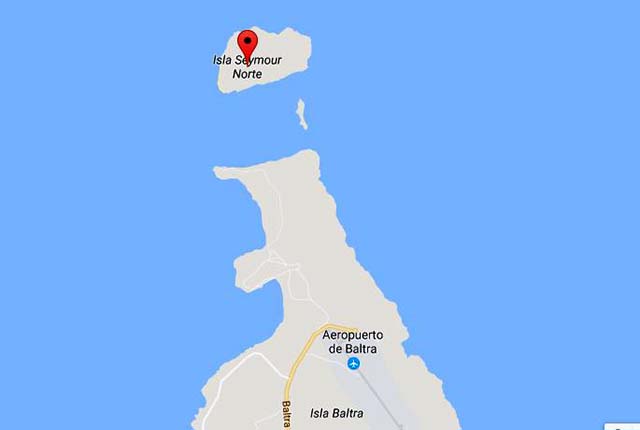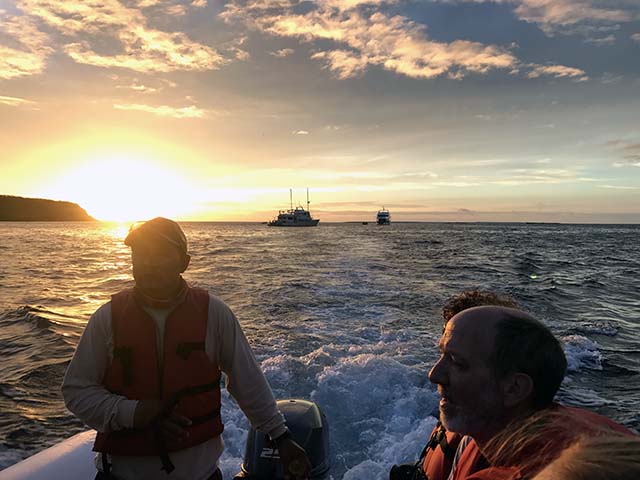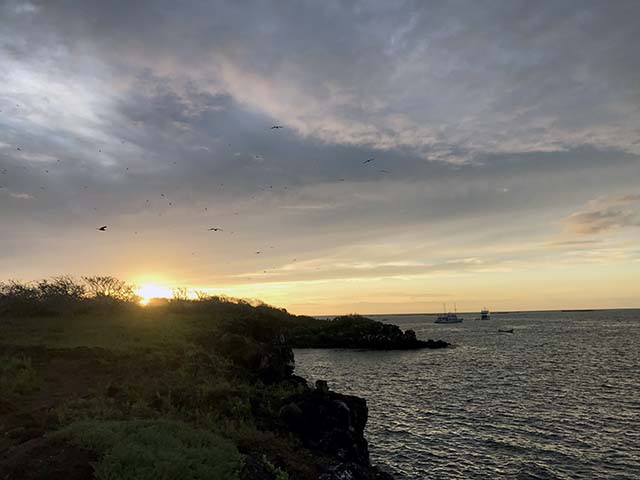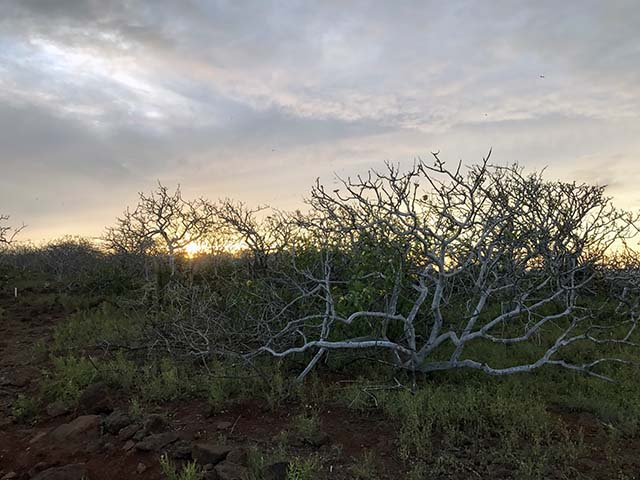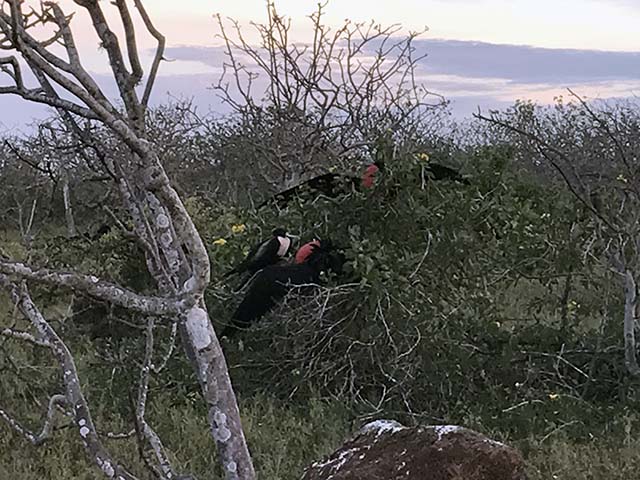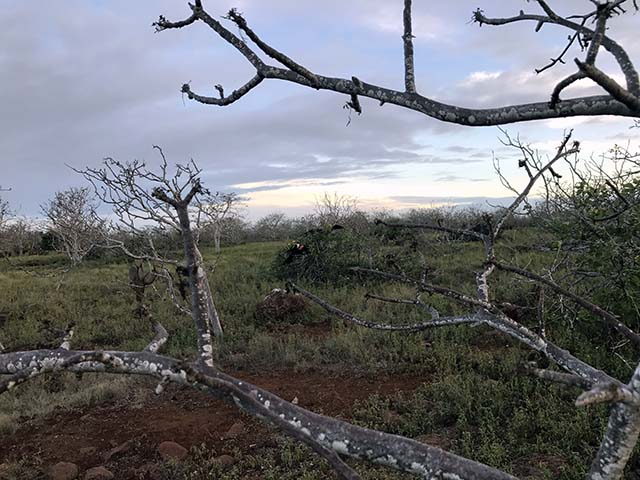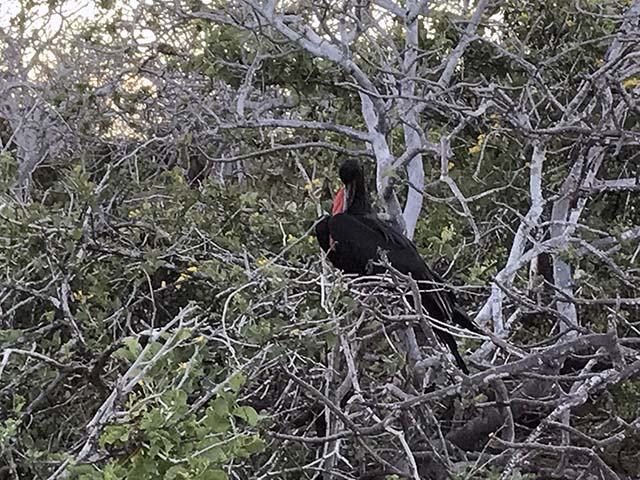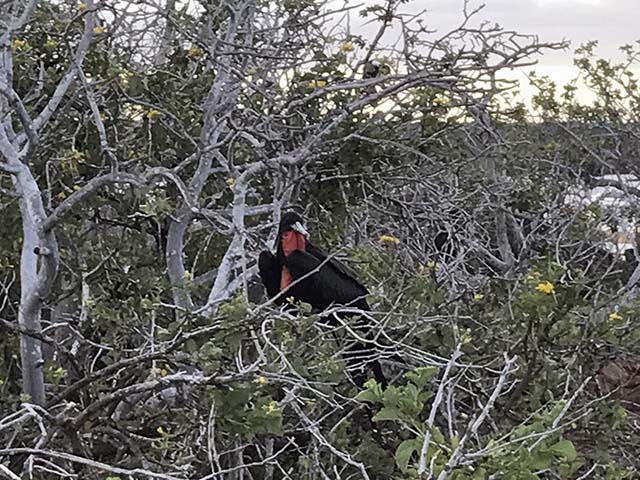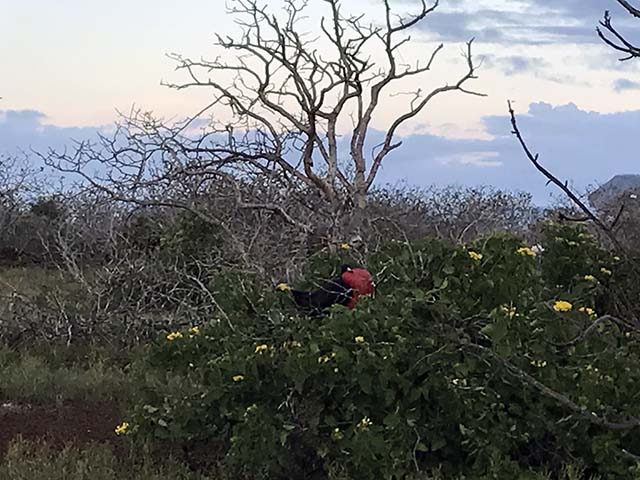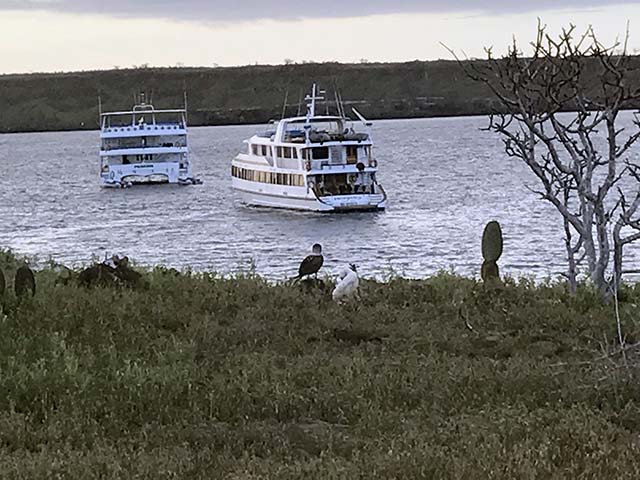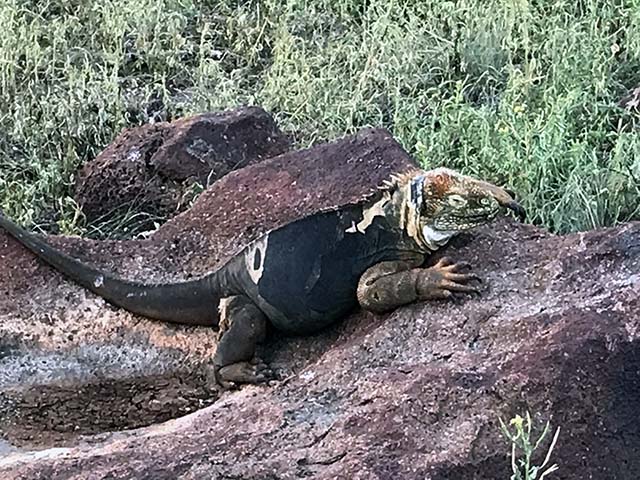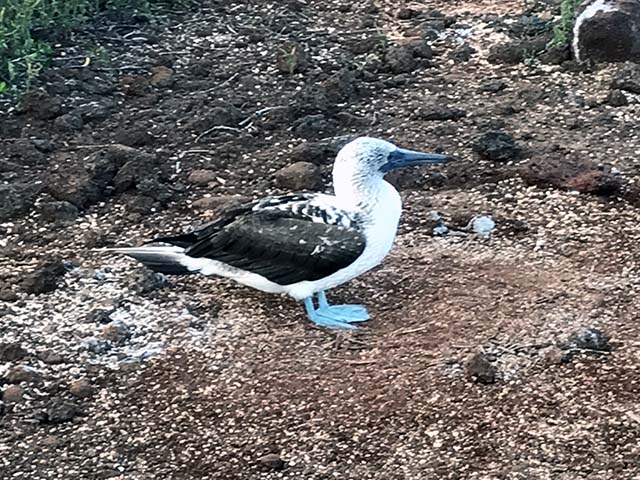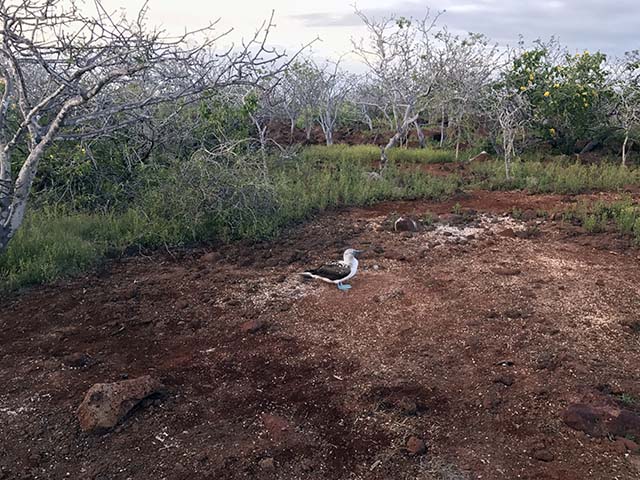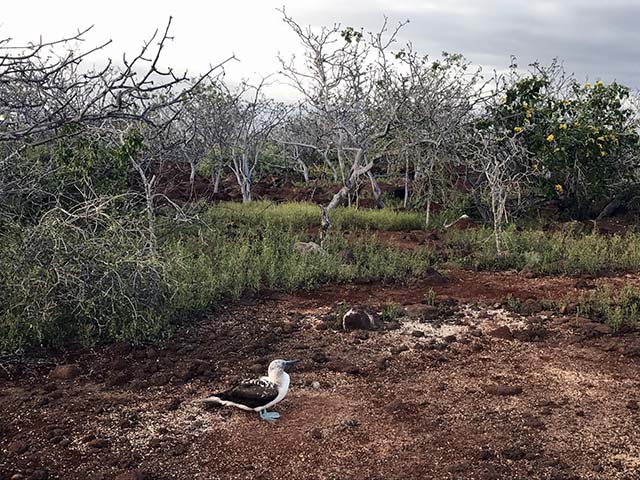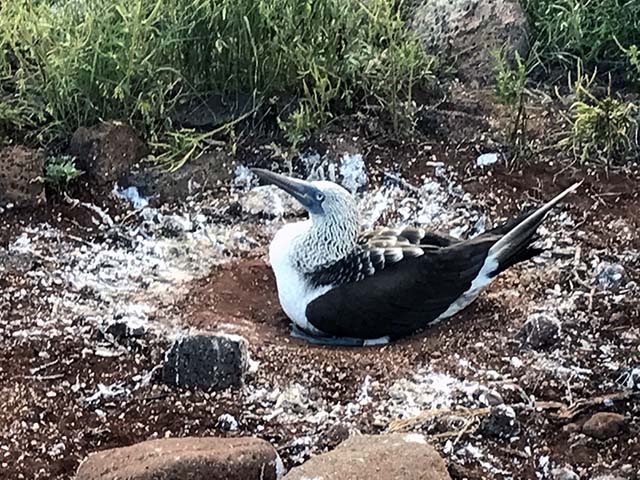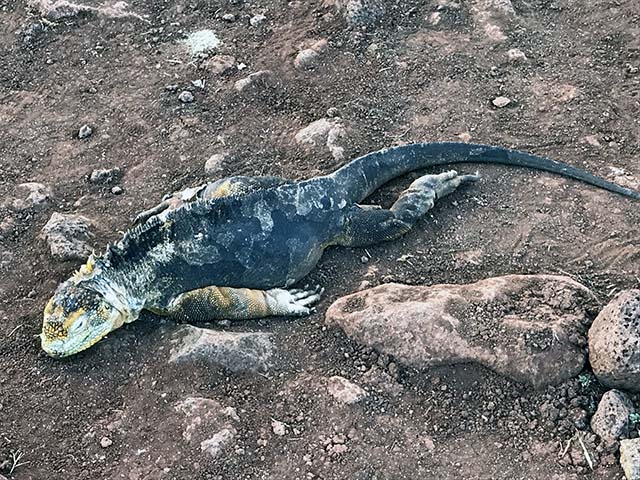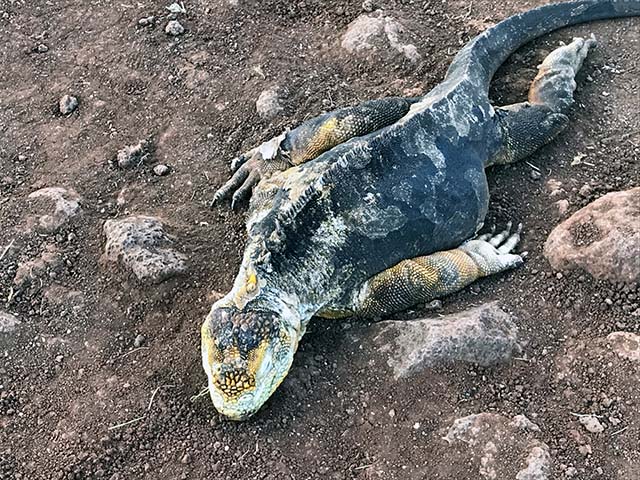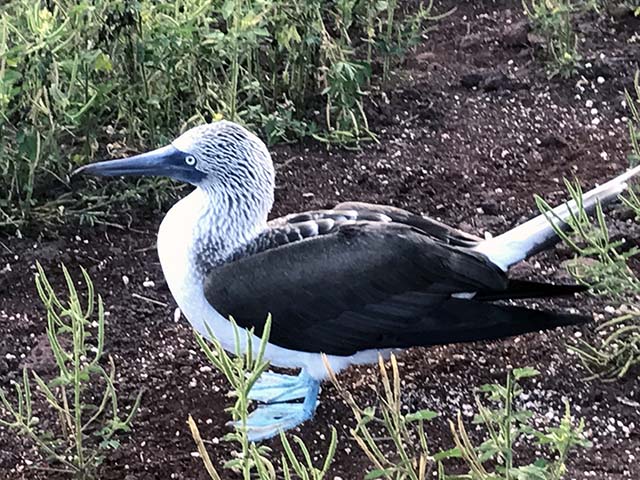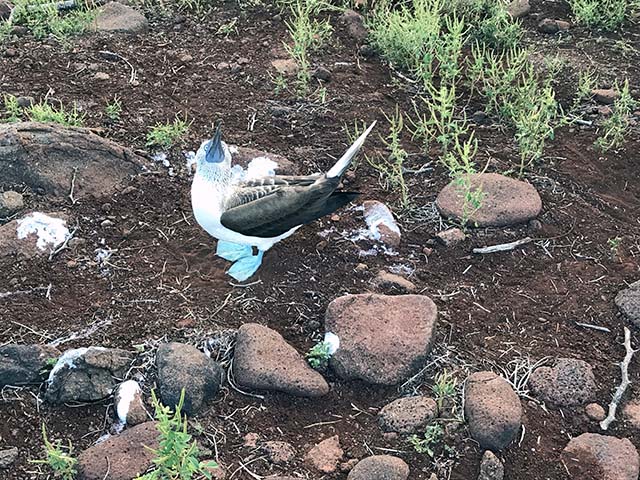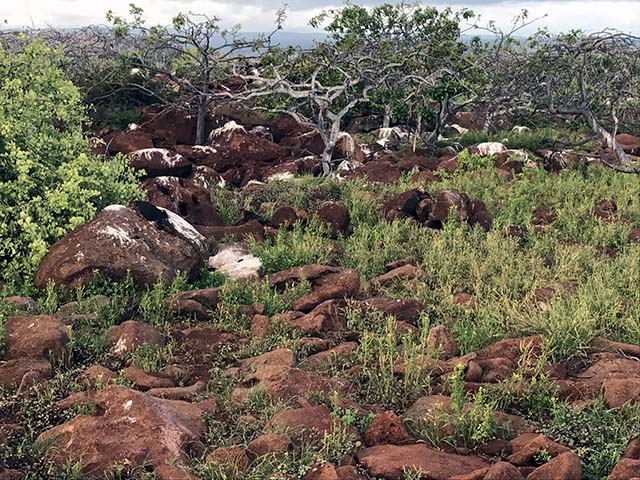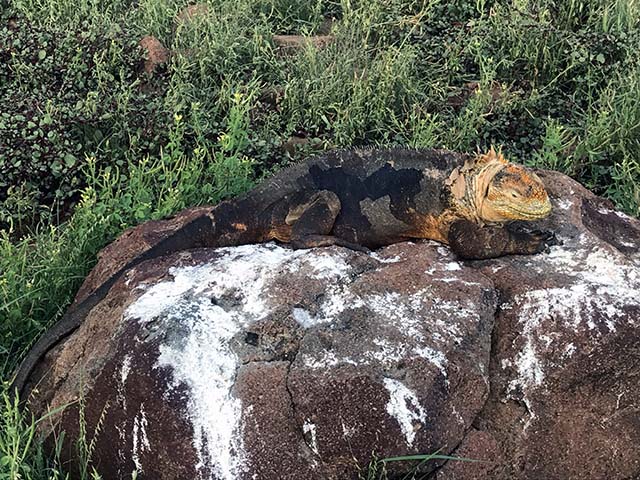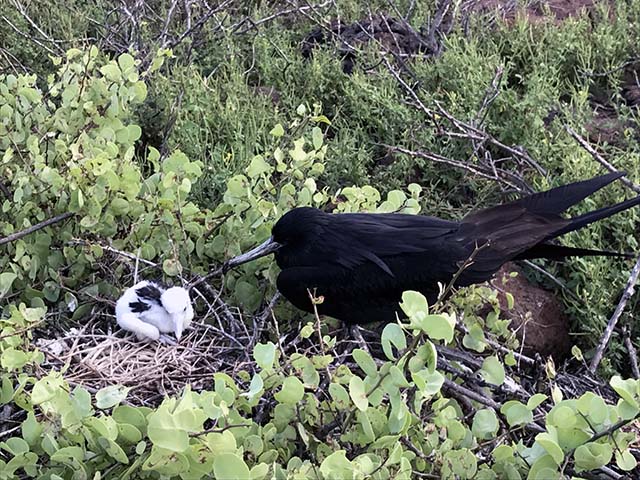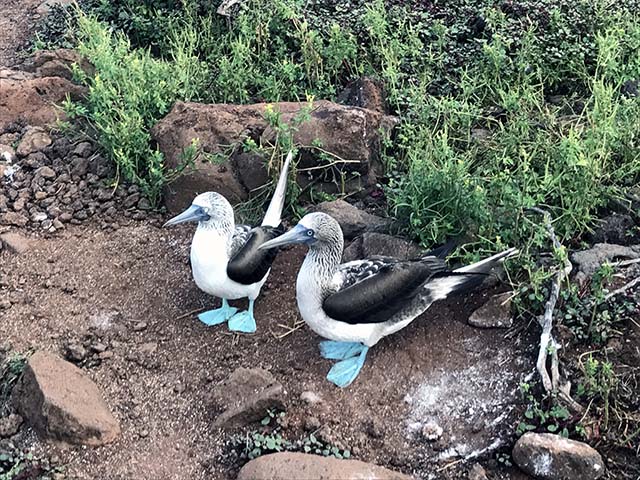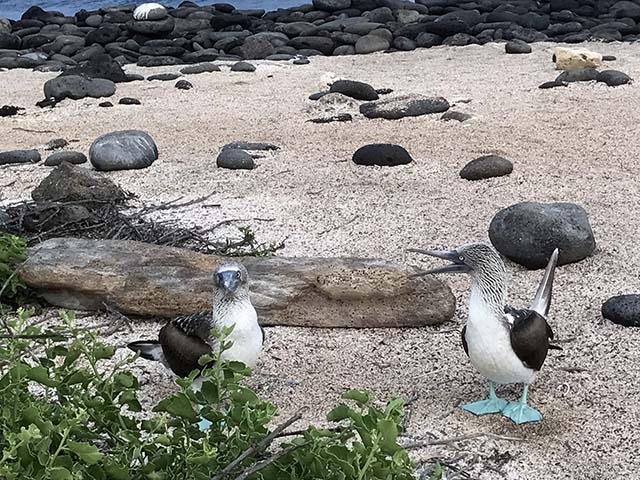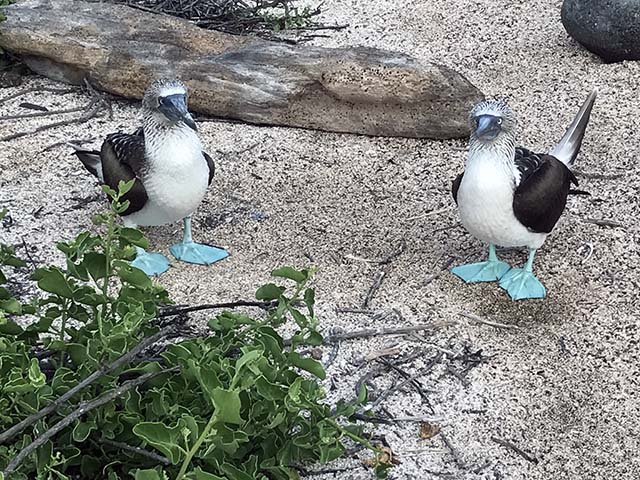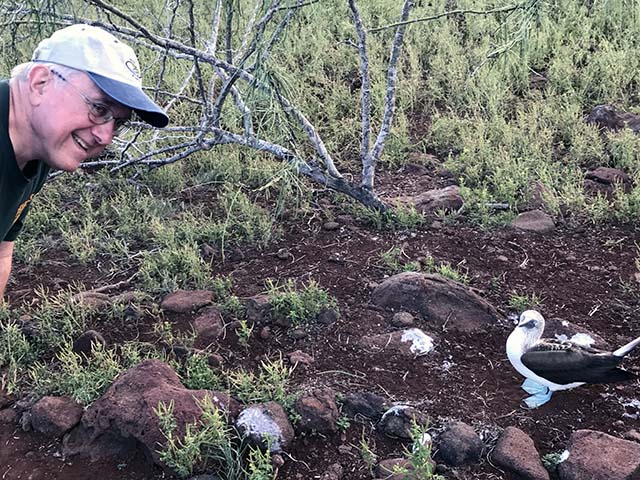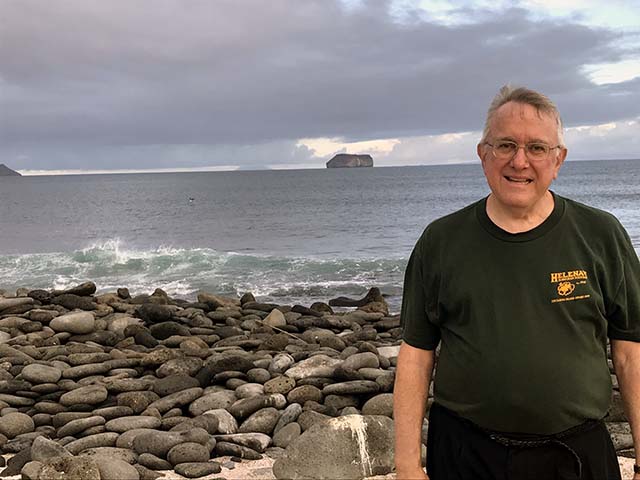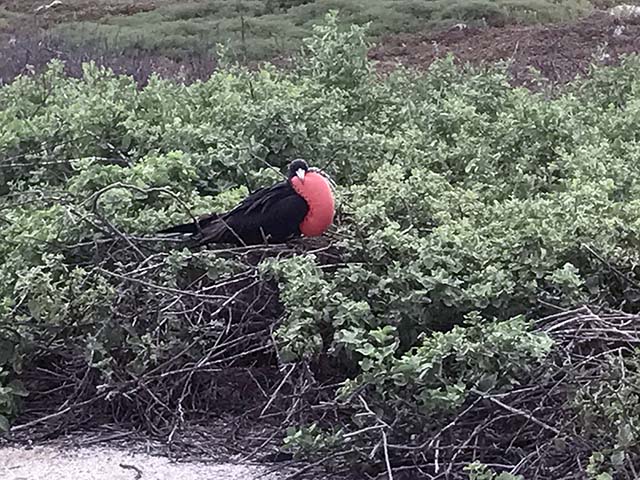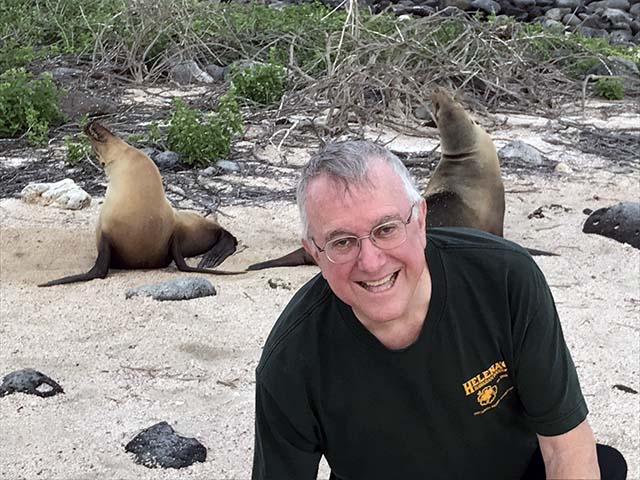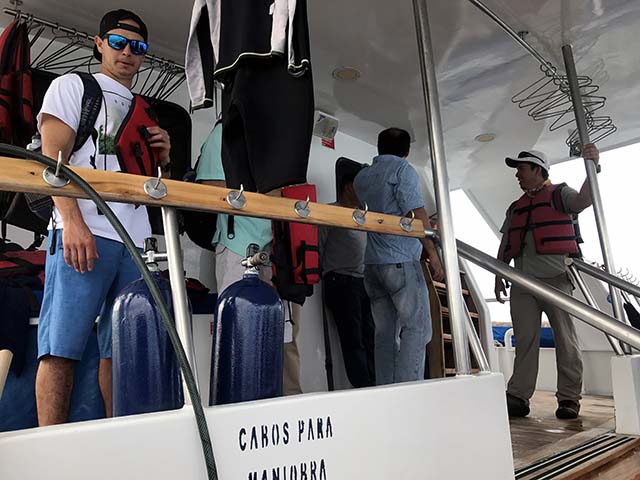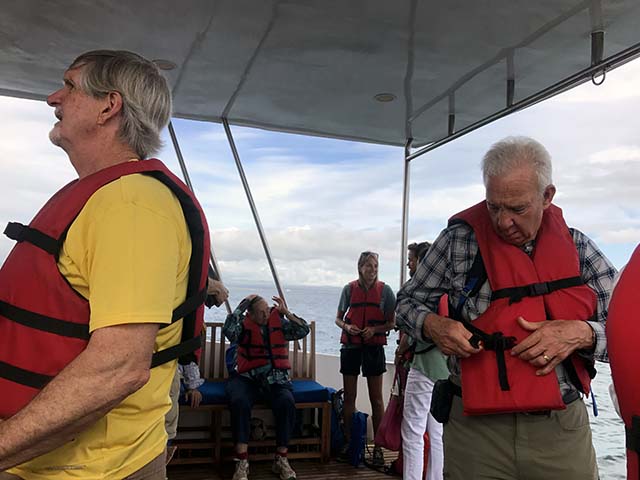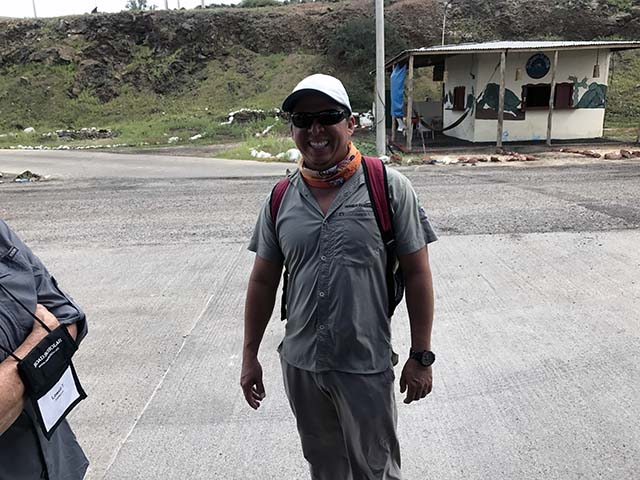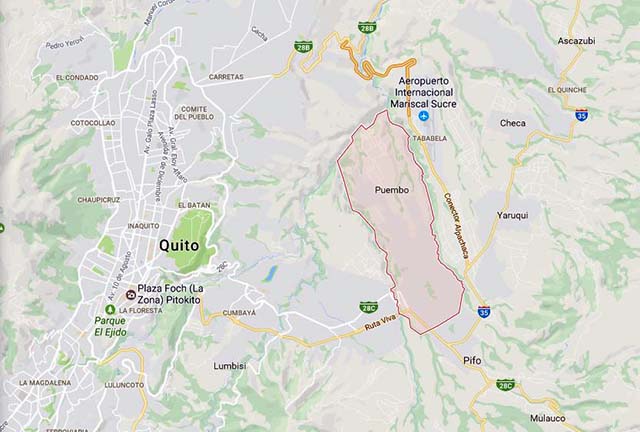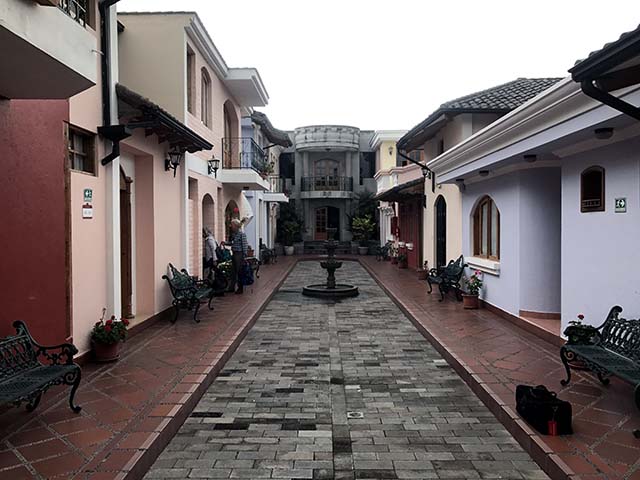|
Our final day in the Galapagos Islands started early early, as we wanted to be ashore on North Seymour Island at dawn to see the birds. North Seymour Island (Spanish: Isla Seymour Norte) is a small island near Baltra Island in the Galápagos Islands. It was formed by uplift of a submarine lava formation. The whole island is covered with low, bushy vegetation. The island is named after an English nobleman, Lord Hugh Seymour. North Seymour Island has an area of 1.9 square kilometres (0.73 sq mi) and a maximum altitude of 28 metres (92 ft). This island is home to a large population of blue-footed boobies and swallow-tailed gulls. It hosts one of the largest populations of magnificent frigatebirds (Fregata magnificens) and a slow growing population of the Galápagos land iguanas (Conolophus subcristatus). North Seymour has a visitor trail approximately 2 kilometres (1.2 mi) in length crossing the inland of the island and exploring the rocky coast. The stock for the captive breeding program of the Galápagos land iguana is descended from iguanas which Captain G. Allan Hancock translocated from nearby Baltra Island to North Seymour Island in the 1930s. This was very important because Baltra Island had a U.S airbase on it during World War II, while North Seymour, which has no people who live on it, and is only viewable today with an official guide who works for the Galápagos National Park. North Seymour was created by seismic uplift, rather than being of volcanic origin. The island has a flat profile with cliffs only a few meters from the shoreline, where swallowtail gulls and tropicbirds sit perched in ledges. A tiny forest of silver-grey Palo Santo trees stand just above the landing, usually without leaves, waiting for rain to bring them into bloom. The island is teeming with life. While visiting the island, one may have to give way to a passing sea lion or marine iguana. Flocks of pelicans and swallow-tailed gulls feed off shore, and seasonally, Nazca boobies can also be seen. North Seymour is an extraordinary place for breeding birds, and is home to one of the largest populations of nesting blue-footed boobies and magnificent frigate birds. Pairs of blue-footed boobies can be seen conducting their mating ritual as they offer each other gifts, whistle and honk, stretch their necks towards the sky, spread their wings, and dance—showing off their bright blue feet. Magnificent frigatebirds perch in low bushes, near the boobies, while watching over their large chicks. The frigates are huge, dark aerobats with a 90-inch (2.3 m) wingspan. Male frigates can puff up their scarlet throat sacks to resemble giant red balloons. Boobies and frigates have an interesting relationship. Boobies are excellent hunters and fish in flocks. The frigates by comparison are pirates, they dive bomb the boobies to force them to drop their prey. Then, the aerobatic frigate swoops down and picks up the food before it hits the water.
North Seymour is very near the airport on Baltra, which was convenient. Somebody must have planned this.
And off we go to North Seymour. Nice sunrise, right Ken?
Yep, nice indeed. And wait, do I see some birds?
Birds and Seals on North Seymour Island
They're up there, all right. This is a great time for feeding.
Hey, magnificent frigate birds.
Over there. Way over there. They're the birds who have under their chins the big red pouches which the males inflate proudly during mating season. I mean, who could resist a big red pouch under a chin?
With a body length of 89–114 cm (35–45 in), [the magnificent frigate bird] is the largest species and has the longest bill. The adult male is all-black with a scarlet throat pouch that is inflated like a balloon in the breeding season. Although the feathers are black, the scapular feathers have a purple sheen, in contrast to the male great frigatebird's green sheen. The female is brownish-black, but has a white breast and lower neck sides, a brown band on the wings, and a blueish-grey eye-ring.
Wait a minute...this guy is deflated. What's wrong with you, buddy?
That's more like it.
Who let the tourists in, anyway?
Nice. Yet another land iguana.
And a blue-footed booby!
Aren't they the greatest?
They're a proud species.
And they're not ashamed of what they nest in. Would you be, if you had blue feet that lovely?
It's a land iguana.
Careful, he's coming this way.
Blue feet!
Sure, I'd stick my nose and my tail up in the air if I had feet like that.
Signs of boobies are everywhere.
And do you think he minds?
Yeah, yeah, bird poop. What's a self-respecting land iguana to do?
Aww...a baby frigate bird.
And boobies!
Boobies everywhere!
You like our feet, don't you, tourist? We know you do.
Show me those baby blue feet, little booby.
This tourist has finally seen enough boobies.
Back to the boat? Civilization? Really?
It's enough to make a guy puff out his chest.
Let's get outta here!
Bye bye, stern of the boat.
One more time with the red life jackets.
So long, Tip Top III
So long, Franklin. You were great!
And so we dinghied to Baltra and waited forever to squeeeeze onto the creaky old bus to the airport and caught a plane to Guayaquil and then to the Quito airport and then....
Dinner and a bedroom that didn't toss and turn all night. This is one beautifully designed wing of a conference hotel located in Puembo, a district near the Quito airport. There was no heat in the rooms, but there were lots of blankets on the bed. And WiFi. And it wasn't hot; it wasn't muggy; and there were no jungle animals screaming at the top of their little lungs all night. It was great.
|

